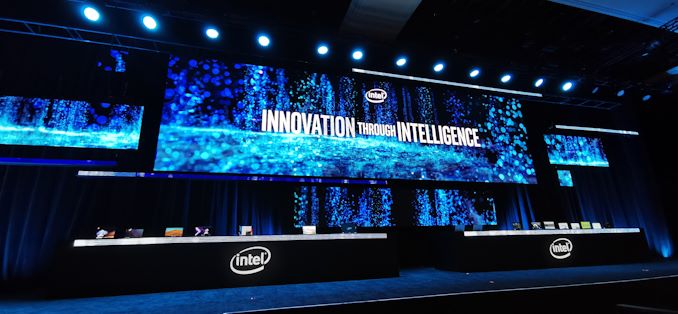If you have been following the technological happenings for the last few days, then you must not have missed that this year's CES 2020 is taking place. At this fair, you would find all sorts of big names from companies from all over the world. In addition to Apple, CES 2020 was also attended by AMD and Intel, which you may know primarily as processor manufacturers. Currently, AMD is several big steps ahead of Intel, especially in technology maturity. While Intel is still experimenting with the 10nm production process and still relies on 14nm, AMD has reached the 7nm production process, which it intends to reduce even further. But let's not focus on the "war" between AMD and Intel right now and accept the fact that Apple computers will continue to use Intel processors. What can we expect from Intel in the near future?
It could be interest you

Processors
Intel introduced new processors of the 10th generation, which it named Comet Lake. Compared to the previous, ninth generation, not many changes took place. It's all more about conquering the magical 5 GHz limit, which was managed to be overcome in the case of the Core i9, and attacked in the case of the Core i7. Until now, the most powerful processor from Intel was the Intel Core i9 9980HK, which reached a speed of exactly 5 GHz when boosted. The TDP of these processors is around 45 watts and it is expected that they will appear in the updated configuration of the 16″ MacBook Pro, which will probably come already this year. For now, no other information about these processors is known.
Thunderbolt 4
Much more interesting for Apple fans is the fact that Intel introduced Thunderbolt 4 together with the introduction of another processor series. In addition to the fact that the number 4 indicates a serial number, according to Intel, it is also a multiple of the speed of USB 3. However, it should be noted that USB 3 has a transmission speed of 5 Gbps, and Thunderbolt 4 should therefore have 20 Gbps - but that is nonsense, because Thunderbolt 2 already has this speed. So when Intel introduced it, it was most likely the latest USB 3.2 2×2, which reaches the highest speed of 20 Gbps. According to this "calculation", Thunderbolt 4 should boast a speed of 80 Gbps. However, it will most likely not be without problems, as this speed is already really high and manufacturers could have problems with the production of cables. Furthermore, there could be problems with PCIe 3.0.
DG1 GPU
In addition to processors, Intel also introduced its first discrete graphics card. A discrete graphics card is a graphics card that is not part of the processor and is located separately. It received the designation DG1 and is based on the Xe architecture, i.e. the same architecture on which the 10nm Tiger Lake processors will be built. Intel states that the DG1 graphics card, together with Tiger Lake processors, should offer up to twice the graphics performance of classic integrated cards.
It could be interest you





Like, I don't know what you're writing about here, but Comet Lake was introduced last year in August. ??♂️